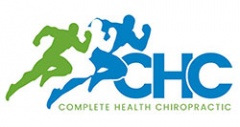Neuromuscular Re-Education is a general term that refers to techniques that attempt to retrain the neuromuscular system to function properly. The basis of this idea is that the formation of certain patterns of communication between muscles and nerves allow people to perform simple everyday acts, such as walking or climbing stairs.
What Is Neuromuscular Re-Education?
Neuromuscular Re-Education is a therapeutic technique that is used to improve balance, coordination, posture, kinesthetic sense and proprioception (the sense of the relative position of neighboring parts of the body and the amount of effort being employed in movement).
These normal patterns of movement can be disrupted by injuries or may be impaired in people with certain medical conditions. The general aim of Neuromuscular Re-Education is either to re-establish normal patterns of movement in injured people and disabled people, by practicing a variety of exercises.
At its most basic, Neuromuscular Re-Education is very similar to physical therapy and may involve many of the same techniques to promote healing.
Conditions & Treatment
Conditions that can be helped by Neuromuscular Re-Education include people who have experienced fractures or muscle tears or people with degenerative conditions like arthritis or cerebral palsy.
Healthy people who want to improve their overall balance, strength or flexibility, such as professional dancers or athletes, may also seek out certain forms of these therapies.
There is no precise description of what a Neuromuscular Re-Education session may entail. Treatment can include one-legged standing exercises to improve balance, strengthening exercises that target a specific area of the body or stretching routines to increase both flexibility and range of motion in an injured limb. Therapeutic massage may also be a part of these therapies.
Tandem exercises along with a postural challenge may be utilized to evaluate stability. The individual receiving treatment is encouraged to feel the correct position of joints and to perceive the direction of movement of the body extremities.
